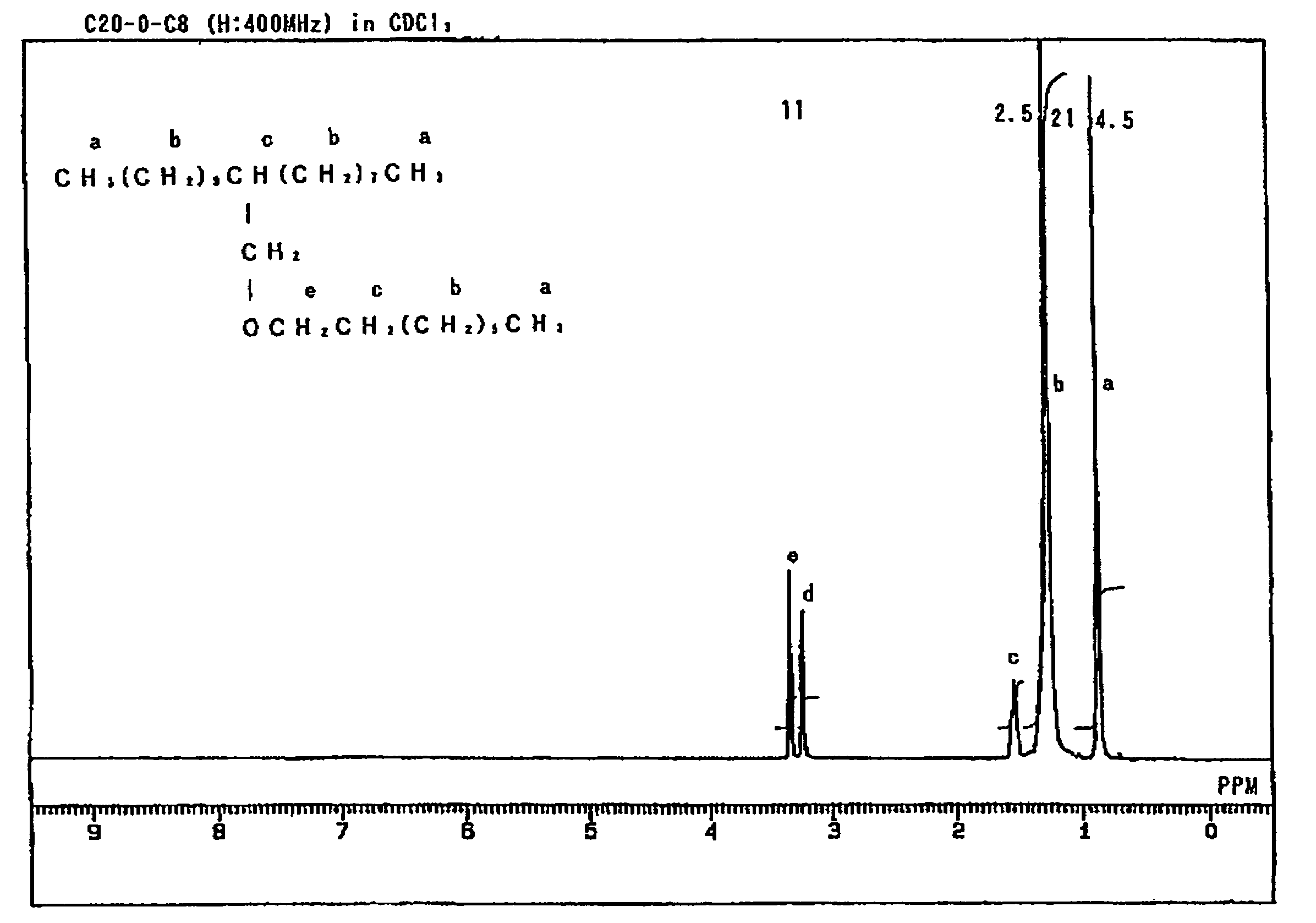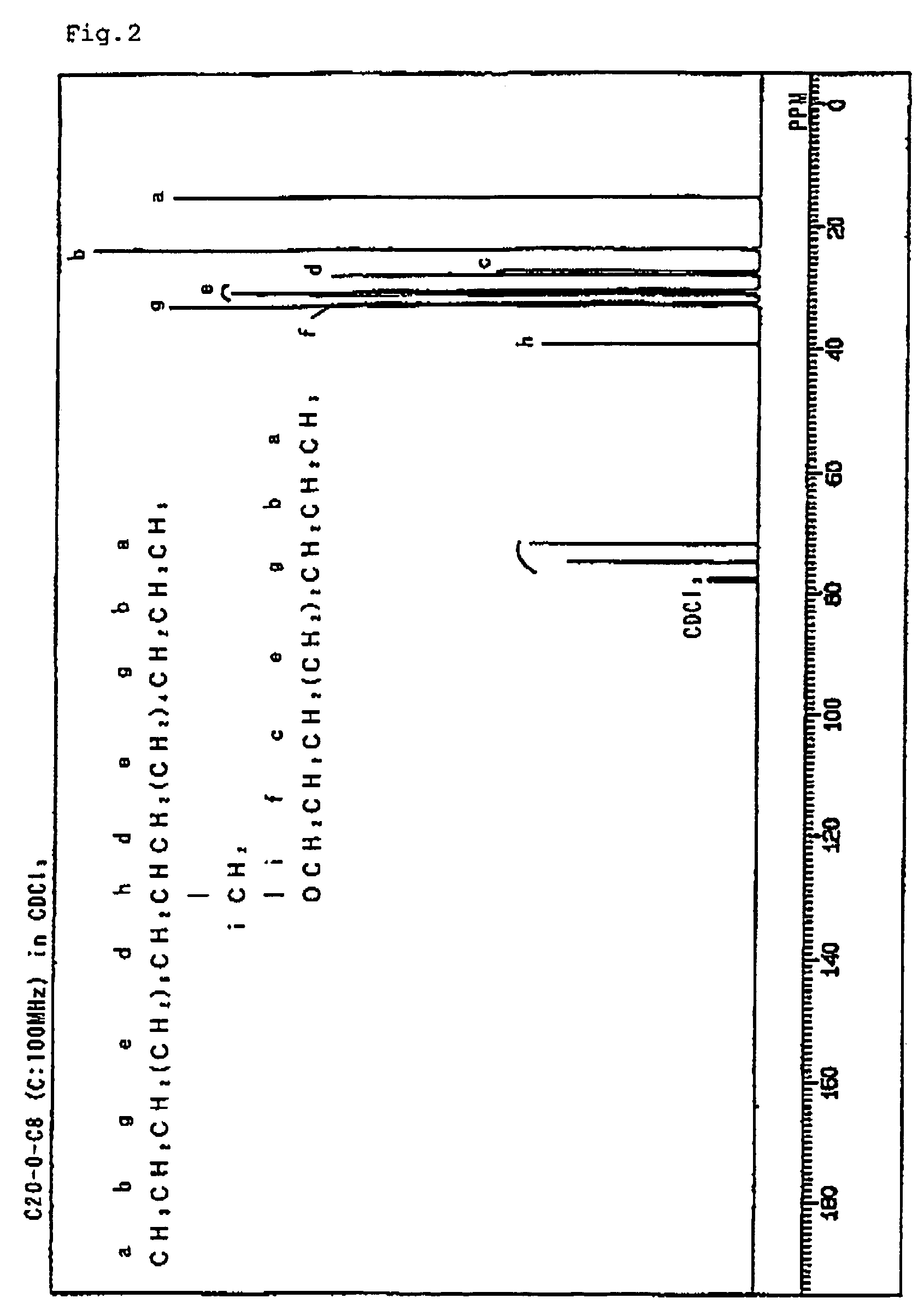Lube base oil and lubricating oil composition
a technology of lubricating oil and base oil, which is applied in the direction of lubricant composition, liquid carbonaceous fuel, fuel, etc., can solve the problems of affecting the economic benefits of fuel, affecting the compatibility of organic materials, and high polarity, so as to reduce evaporation loss, excellent compatibility with organic materials, and low viscosity
- Summary
- Abstract
- Description
- Claims
- Application Information
AI Technical Summary
Benefits of technology
Problems solved by technology
Method used
Image
Examples
production example 1
[0045]2-Octyl-1-dodecanol (300 g), 1-bromooctane (300 g), tetrabutylammonium bromide (30 g), and an aqueous sodium hydroxide solution (500 g) (sodium hydroxide (150 g) dissolved in water (350 g)) were placed in a 2-L glass flask, and the mixture was allowed to react under stirring for 20 hours at 50° C.
[0046]After completion of reaction, the reaction mixture was transferred to a separating funnel, and the aqueous layer was separated through filtration. The remaining organic layer was washed five times with water (500 mL). The organic layer was distilled under reduced pressure, to thereby separate a compound.
[0047]The purity of the compound was determined by means of a gas chromatography analyzer (analyzer: Model Hitachi 263-70, column: OV-1 packed column (product of GL Science Inc.) (2 m)) to be 99% or higher (as calculated based on peak area). The compound was identified as an ether compound having a structure represented by the following formula by means of nuclear magnetic resona...
production example 2
[0049]The procedure, including reaction and post-treatment, of Production Example 1 was repeated, except that 2-decyl-1-dodecanol (95%) (326 g) and 1-bromoheptane (197 g) were employed instead of 2-octyl-1-dodecanol (300 g) and 1-bromooctane (300 g), respectively, to thereby yield a compound. The structure of the compound was analyzed in a manner similar to that employed in Production Example 1, thereby identifying the compound to be an ether compound having a structure represented by the following formula.
[0050]
production example 3
[0051]The procedure, including reaction and post-treatment, of Production Example 1 was repeated, except that 2-decyl-1-tetradecanol (354 g) and 1-bromoheptane (200 g) were employed instead of 2-octyl-1-dodecanol (300 g) and 1-bromooctane (300 g), respectively, to thereby yield a compound. The structure of the compound was analyzed in a manner similar to that employed in Production Example 1, thereby identifying the compound to be an ether compound having a structure represented by the following formula.
[0052]
PUM
| Property | Measurement | Unit |
|---|---|---|
| kinematic viscosity | aaaaa | aaaaa |
| aniline point | aaaaa | aaaaa |
| flash point | aaaaa | aaaaa |
Abstract
Description
Claims
Application Information
 Login to View More
Login to View More - R&D
- Intellectual Property
- Life Sciences
- Materials
- Tech Scout
- Unparalleled Data Quality
- Higher Quality Content
- 60% Fewer Hallucinations
Browse by: Latest US Patents, China's latest patents, Technical Efficacy Thesaurus, Application Domain, Technology Topic, Popular Technical Reports.
© 2025 PatSnap. All rights reserved.Legal|Privacy policy|Modern Slavery Act Transparency Statement|Sitemap|About US| Contact US: help@patsnap.com



